از درخواست شما به دلیل تاخیر در پاسخ اجتناب کنید، لطفا واتساپ/وی چت/اسکایپ خود را همراه با پیام وارد کنید تا بتوانیم در اولین بار با شما تماس بگیریم.
ما ظرف 24 ساعت به شما پاسخ خواهیم داد. اگر برای موارد فوری، لطفا WhatsApp را اضافه کنید: +86 17864107808، یا WeChat: +86 17864107808. یا تماس بگیرید +86 17864107808 مستقیما
*ما به محرمانه بودن شما احترام می گذاریم و تمام اطلاعات محفوظ است. ما فقط از اطلاعات شما برای پاسخ به درخواست شما استفاده می کنیم و هرگز ایمیل های ناخواسته یا پیام های تبلیغاتی ارسال نمی کنیم.
Curious about UV flatbed printers? These printers are game-changers for industries looking for versatility and quality in printing. But what exactly makes them stand out?
UV flatbed printers use ultraviolet light to cure ink, allowing them to print on various materials with impressive durability. They’re perfect for businesses that require both quality and versatility in their printing processes.
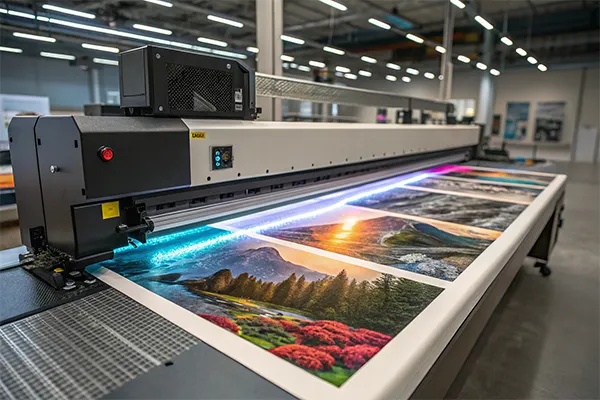
While UV flatbed printers offer incredible benefits, they come with some downsides. Let’s dive into some of the challenges associated with these machines.
Despite their impressive capabilities, UV printers have their own set of challenges. If you’re considering one, it’s essential to know the potential drawbacks.
UV printers can be expensive to purchase and maintain. They require specialized care, and the inks can be costly. Additionally, not all materials are ideal for UV printing without extra preparation.

The high initial cost of UV printers can be a significant barrier for smaller businesses or startups. While the versatility of these printers is unmatched, the upfront cost and maintenance expenses can add up quickly. In addition to the printer itself, UV printers need specialized inks that can be quite expensive. These inks also have a shorter shelf life, leading to additional costs in managing inventory.
Another challenge with UV printers is their sensitivity to environmental conditions. These machines require specific operating environments to function correctly. They may not work well in extremely high or low temperatures, or in locations with high humidity levels. Additionally, UV ink needs proper ventilation, as it can emit fumes during the printing process. Without the right setup, the printer could underperform or require frequent repairs.
UV printers also require regular maintenance to keep everything running smoothly. The curing lamps, in particular, need to be replaced after a certain number of hours to maintain print quality. Print heads may also need to be cleaned regularly to avoid ink blockages, which could affect the overall print output. This adds extra time and effort to the printer’s upkeep.
UV printers are known for their ability to print on a wide range of materials. But can they truly print on anything? Let’s explore.
UV printers are highly versatile and can print on many surfaces, including wood, glass, metal, plastic, and more. However, some materials may require special preparation or settings for optimal results.
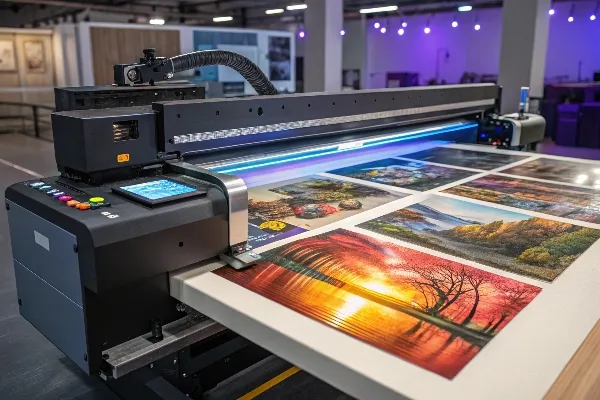
UV printers are renowned for their ability to print on virtually any flat material, from paper to metal and glass. This makes them ideal for industries that need high-quality prints on unique surfaces. For example, you can print on wood to create custom furniture pieces, or on glass for promotional items and signage. The versatility of UV printers allows businesses to offer a wide range of products, from custom packaging to personalized gifts.
However, while UV printers can handle a variety of materials, some do require pre-treatment. Certain plastics or metals may need to be primed before printing to ensure the ink adheres properly. In some cases, you may need to adjust the settings for the material you’re printing on. For example, printing on fabric may require specific ink types or adjustments to avoid smudging or uneven coverage. Despite these minor adjustments, UV printing’s ability to print on nearly every surface remains a significant selling point.
It’s important to note that some surfaces may not be suitable for UV printing, especially if they are too porous or textured. While UV printing works well on smooth, non-porous surfaces, printing on highly textured materials may result in uneven coverage or ink pooling. Therefore, it’s crucial to test different materials and settings to ensure the best possible results.
UV printers are a long-term investment, but how long can they actually last? Let’s take a look at their lifespan.
With proper maintenance, a چاپگر UV1 can last between 5 to 10 years. Regular upkeep and care can extend its lifespan and keep it performing at its best.

A UV printer can last anywhere from 5 to 10 years, depending on how well it’s maintained. Just like any piece of equipment, the longevity of your UV printer is closely tied to how much care it receives. Regular cleaning, proper handling of the print heads, and routine maintenance will go a long way in extending the printer’s lifespan. Replacing parts like the سر چاپ2 or curing lamps at the recommended intervals can help keep the printer functioning smoothly.
One of the most critical components in a UV printer is the print head, which is responsible for depositing the ink onto the material. Over time, these heads can wear out, especially with high-volume printing. If the printer is used frequently or for large runs, it’s essential to check the condition of the print heads regularly and replace them as needed. Neglecting to do so could lead to clogged or damaged print heads, which would impact print quality and require costly repairs.
The curing lamps also have a limited lifespan, usually between 1000 to 1500 hours of use. After this period, the lamps begin to lose their effectiveness, which can result in poor ink curing and faded prints. To ensure optimal performance, replacing the curing lamps in a timely manner is necessary. By following these maintenance practices, you can maximize the lifespan of your UV printer and get the most value from your investment.
Thinking about buying a UV printer? Let’s discuss why they’re such a popular choice for many businesses and industries.
UV printers offer unmatched versatility and quality, making them an excellent choice for businesses that need to print on a variety of materials and produce high-quality, durable prints.
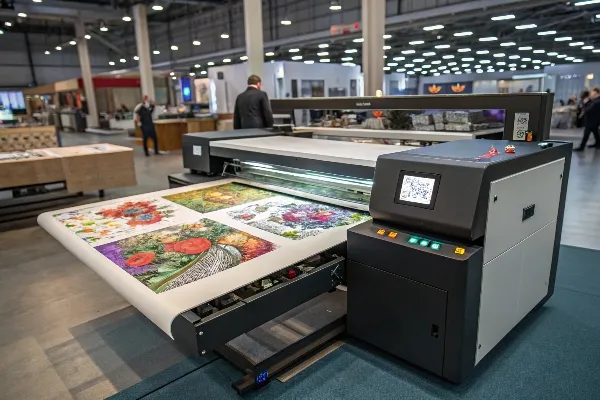
There are several reasons why businesses invest in پرینترهای UV. One of the most significant advantages is their versatility. UV printers can print on almost any flat material, which opens up a wide range of possibilities for custom products, packaging, and promotional items. Whether you’re printing on wood, plastic, glass, or metal, a UV printer can handle it all. This flexibility allows businesses to cater to a wide range of industries, from signage and advertising to custom gifts and packaging.
Another key benefit of پرینترهای UV is the print quality. The UV curing process hardens the ink instantly, creating vibrant, durable prints that are resistant to fading, scratches, and water damage. This makes UV prints ideal for both indoor and outdoor applications, especially for products that need to stand up to wear and tear. UV prints also have a higher resistance to UV light, ensuring that they don’t fade as quickly as prints from traditional printers.
Furthermore, UV printers are eco-friendly. The inks used in UV printing are free from volatile organic compounds (VOCs), making them a safer option for both the environment and the workers handling the prints. Since the ink cures instantly, there’s no need for drying time, which also helps reduce energy consumption. For businesses that are focused on sustainability, UV printing offers a greener alternative to traditional printing methods.
Just like any ink, UV ink has a shelf life. But what happens when it expires? Let’s explore the consequences.
When UV ink expires, it can lead to clogged print heads1, inconsistent printing, and poor adhesion. It’s important to monitor the shelf life of UV ink to avoid these issues.
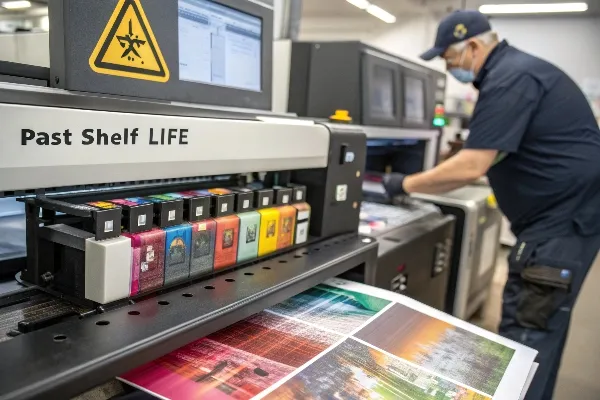
Expired UV ink can cause several issues that affect the quality of your prints. The most common problem is clogging. Over time, the ink can thicken and harden, making it difficult to flow through the print heads. This can lead to inconsistent printing, poor-quality images, or even printer malfunctions. Ink that has expired may also lose its ability to cure properly under UV light, which could result in smudging or incomplete prints.
Another problem with expired ink is that it may not adhere properly to the material, leading to prints that easily peel or fade. This is especially problematic for products that require long-lasting prints, such as outdoor signage or custom packaging. To prevent these issues, it’s essential to check the expiration dates of your UV inks regularly and replace any expired ink before use.
Additionally, expired ink can damage the printer’s components. If the ink becomes too thick or clumpy, it could cause blockages in the ink delivery system, leading to costly repairs. Storing ink properly—away from light and heat—can help extend its shelf life and ensure it remains usable for as long as possible.
If you’re wondering whether UV prints are waterproof, you’re not alone. Let’s find out how water-resistant UV prints really are.
Yes, UV prints are generally waterproof once fully cured. The ink hardens under UV light, making it resistant to water and other environmental factors.
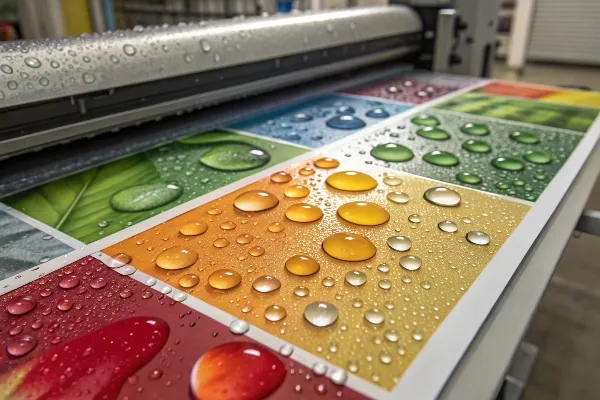
چاپ های UV are known for their durability, and once the ink has fully cured, it becomes water-resistant. The UV curing process hardens the ink, creating a protective layer that can withstand exposure to water, scratches, and fading. This makes UV printing an excellent choice for products and materials that will be exposed to the elements, such as outdoor signage, packaging, and promotional items.
However, while UV prints are waterproof, the level of resistance can vary depending on the material and the conditions to which the print is exposed. For example, prints on non-porous materials like acrylic or glass are generally more water-resistant than those on porous surfaces like fabric or wood. In some cases, applying a protective coating or laminate over the print can further enhance its water resistance, especially for products that will be exposed to harsh weather conditions.
It’s important to note that while UV prints are resistant to water, they may not be completely waterproof under all circumstances. For products that will be constantly submerged in water or exposed to excessive moisture, additional coatings or treatments may be necessary to ensure long-term durability.
UV flatbed printers are incredibly versatile and produce durable prints, but they come with certain challenges. Proper maintenance and ink management are key to getting the most out of these printers.